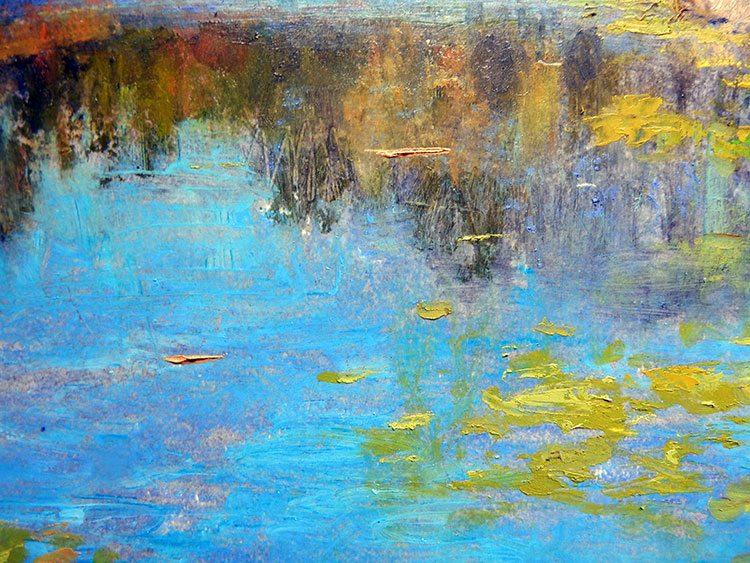Reflecting on Reflections
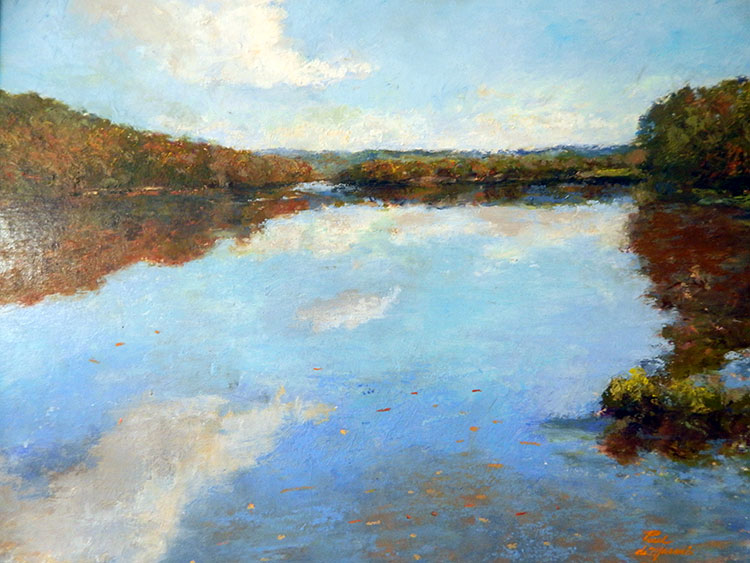
There is something magical about a reflection. Reflections have always fascinated me. It's as if there is another dimension down in the water, another world that we can glimpse but cannot enter. In landscape painting, reflections can add a great deal to a painting. I find that many beginning artists struggle with reflections and lack some of the basic ideas that can help improve the illusion of a believable reflection.
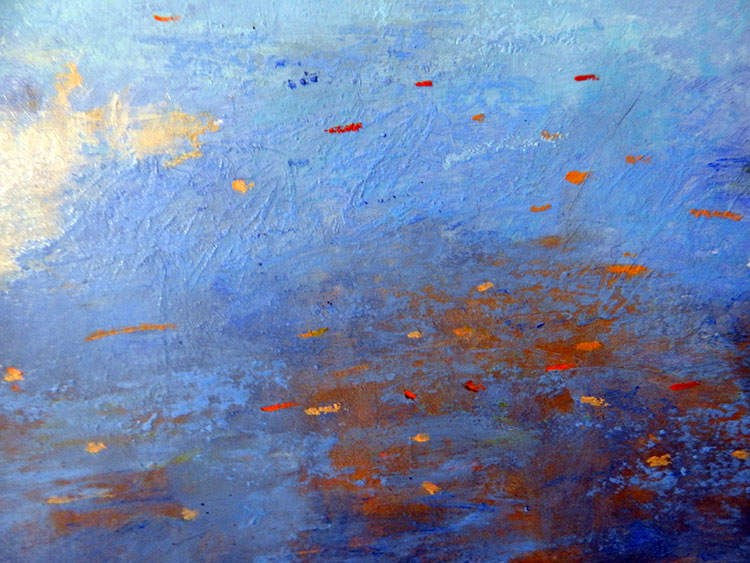
I am not a scientist or physicist so I claim to know no irrefutable truths that can be verified in a laboratory. I have developed some ideas that I think are helpful in making a reflection seem 'true' and I offer them up as possibilities. I try to make the reflection in the water darker in value and duller in color than what is 'out of the water'. I often make the area out of the water a bit warmer in color to exaggerate the difference between what is a reflection and what is not.
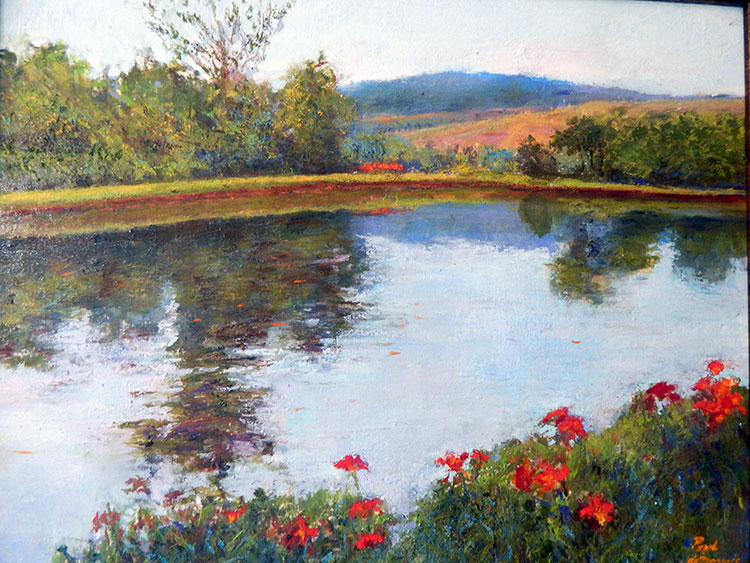
Try not to be too fussy about 'mirroring' what is out of the water and a reflection. I try to line up trees to some degree, but I think a more casual approach seems more natural. You just need to get the idea across. Leave it to our fabulous brains to fill in the blanks here and there. Our brain is fantastic at sorting out what we need and don't need. When we see, our eye sends data to our brain to be sorted out and comprehended. Our eye does not send images to our brain. It sends lots of data. I learned this recently on a great show I saw on PBS. These ideas have influenced me in how I approach painting. I am more comfortable leaving things out and letting the viewer's brain to fill in the illusion. I also feel that leaving out unnecessary details lets the viewer complete the story in their own unique way. Painters are story tellers and good story tellers involve the viewer's imagination in the process. It helps connect them to your painting! Making a connection is a worthy goal in all sorts of artistic endeavors and mediums.
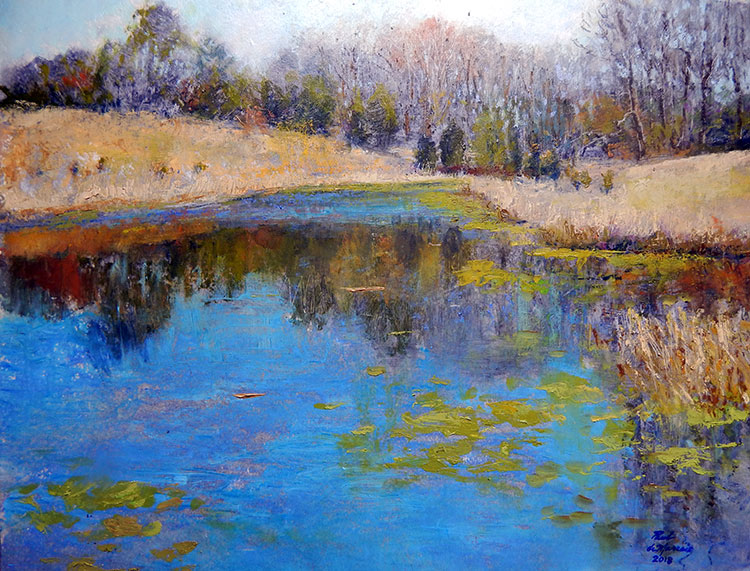
Tricks of the Trade
I have always admired the late Bob Ross, the famous television art instructor. He had all sorts of tricks and techniques he would pass on to the amazement of his television audience. One of his tricks was the 'pull down' stroke where you would 'pull down' strokes to make a reflection. He would take out his 'fan brush' and wiggle it through the strokes to make ripples and movement in the water. I've adapted some of his ideas myself. Water must seem liquid. The blue in the water is a reflection of the sky but the water has a color itself. For instance, if you see alot of warm brown tones near the shore , these colors are reflections from the mud below and indicate the water is shallow. I exaggerate this effect when I see it. There is always some sort of 'junk' on the water's surface, whether it is leaves or twigs. Autumn leaves often have a great red or orange color that dazzles against the cooler colors of the water. Where the water is 'dark' the I paint the leaves lighter in value and where the water is 'light' as in a cloud or sky reflection, I will put in the 'junk' as darker values. These little tricks remind of Bob Ross and his 'happy little trees' that brought joy to millions of viewers. Good tricks are great fun to add to your painting!
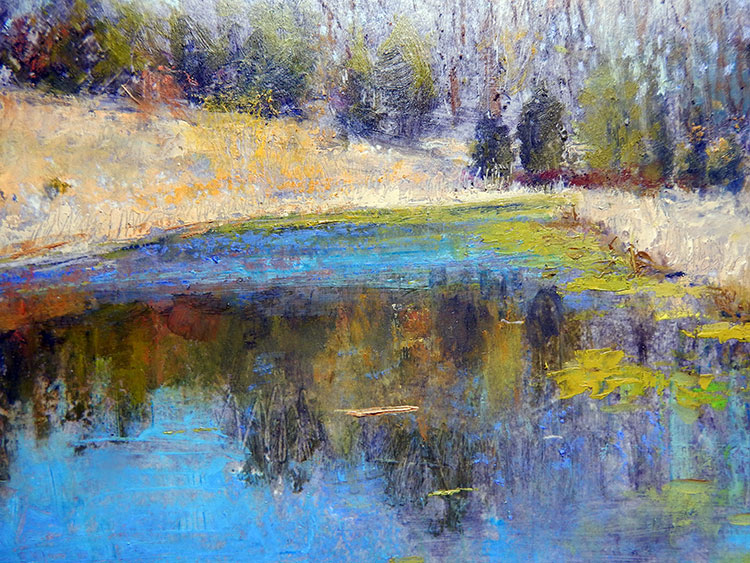
Summary- find a nice water spot and study the reflections you see. Water in itself is so relaxing. I like calm days when there isn't alot of wind to stir up my reflections. I love the fall when the autumn colors reflect down into the water. I love to watch the ducks at our 'green belt' trail in Kingsport. I like the ripples they make in the water and to see their reflected images. Ducks always seem to be having a great time!! I don't see many depressed ducks out there! Painting reflections is fun too! I encourage all painters to give it a try!
